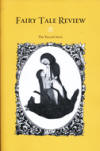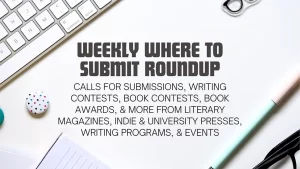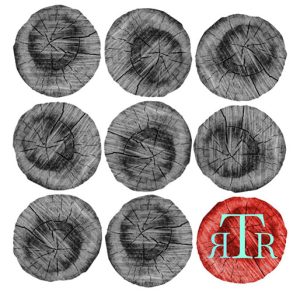Fairy Tale Review – 2013
Like all cherished fairy tales from childhood, the Yellow Issue of Fairy Tale Review invites its readers on a journey with memorable characters and promises treasure. The typical reward of the fairy tale as we know it, though, is more elusive in the selections in this issue, and we are asked to listen carefully. Guest Editor Lily Hoang says to “tiptoe forth with caution or come with sword drawn.” Sage advice, for some of these modern fairy tales come equipped with evil, real and imaginary.
Like all cherished fairy tales from childhood, the Yellow Issue of Fairy Tale Review invites its readers on a journey with memorable characters and promises treasure. The typical reward of the fairy tale as we know it, though, is more elusive in the selections in this issue, and we are asked to listen carefully. Guest Editor Lily Hoang says to “tiptoe forth with caution or come with sword drawn.” Sage advice, for some of these modern fairy tales come equipped with evil, real and imaginary.
The tone-setting quotation from Ray Bolger, the actor who played the beloved Scarecrow in the film version of The Wizard of Oz, opens the gate and sends readers on their journey: “It’s going to be very lonely on that Yellow Brick Road now.” Among the loneliest are Rapunzel, Sleeping Beauty, and Cinderella, inviting us to remember their stories, cast them off, and accept a few new interpretations.
The first treasure is the Table of Contents as it is annotated and allows readers to nibble on selections before committing to a lengthier snack or full-course meal. The titles are familiar and yet estranged from our collective knowledge of fairy tales. Snow White is accompanied by seven satellites, for example, and the mouse, a frequent character in many tales, is coupled with a serpent rather than the anticipated lion. A curious gender-bending title of a retelling of Hansel and Gretel translates to giddy anticipation for what is to come, a characteristic of all good fairy tales.
Each selection contains precise language of many hues and configurations, story plots that surprise and terrorize, and magical imagery that requires the readers’ suspension of disbelief for the duration. From Dawn Manning’s “Cinder,” the couplets below demonstrate a control of the poetic craft with the ability to captivate the reader with the story of mythical sibling rivalry:
Chasing Cupid like a fool,
Venus barring the way. In her rage
Psyche smashed her own sisters
against the rocks, then
let her broken heart smolder
for a thousand years until need
overtook her and she let it
fizzle out.
Nick Francis Potter’s horrific and exquisite prose piece “Josh Henderson is Anne Boleyn” is hypnotic as Josh’s sisters allow him to pretend to be Anne Boleyn for three days—one for each year of her reign—during which he must perform three miracles. Potter’s subtlety in building to the awful, but expected, denouement of his story of evil sisters offers chilling matter-of-factness with sentences such as, “The Henderson parents don’t notice having four girls on this particular Sunday, only noticing a much smoother routine in getting the children ready and into the Astro van, each thinking to themselves (their parents), what a wonderful job we are doing, raising these children.” Readers can only wince and wonder how the parents can be so stupidly oblivious to what is going on and from where such denial might come.
The stories by Shawn Andrew Mitchell (“The Hillbilly in My Pocket”) and Theresa O’Donnell (“Sugar Snatch”) have a similar enthralling power through the use of imagery and plot elements are capable of keeping readers spellbound in language that seems effortless but that requires an acceptance of the existence of a Hillbilly only a few inches tall and a young woman so sweet that everyone wants a literal piece of her. Mitchell introduces us to the pocket-sized hillbilly in the first sentence, asking us to accept the possibility. Once through the first paragraph in which the hillbilly “curls up next to a basket of apples on the tablecloth and saws away like a toy car without a muffler,” the reader is hooked. Similarly, in “Sugar Snatch,” O’Donnell pulls no punches with her first sentence: “My vagina is magical.” What reader would want to stop there?
References to yellow appear in nearly every selection from “there was a hint of honeysuckle on the wind,” to “lemonade,” to “yellow songs” to the final two poems by Changming Yuan, “Yellow Kinship: For Yuan Hongqi” and “East Idioms: Nine Detours of the Yellow River.” But these allusions become less important in the experience of reading through the stories, translations, and poems of the magazine and the more significant themes emerge. As Lily Hoang assures us, “the works in this issue are as effulgent as yellow itself, but lurking—as yellow always lurks—is something sinister and bold, the color forcing itself up and out, revealing, transforming. Yellow yields metamorphosis.”
Reading this issue of Fairy Tale Review is a transformative experience, one that readers won’t want to soon forget, and like all cherished tales—even the most frightening ones—the works in this year’s issue tempt us back into their unique and powerful worlds and transform us ever after.
[digitalcommons.wayne.edu/fairytalereview]





